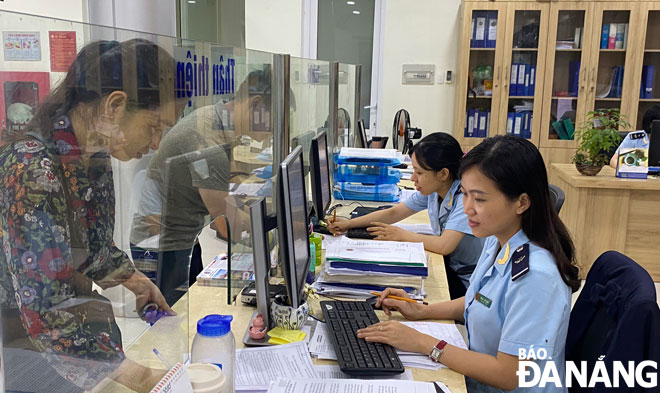More support for Da Nang businesses to access benefits of EVFTA
The EU–Viet Nam Free Trade Agreement (EVFTA) came into force on 1 August, 2020, paving the way for Vietnamese businesses, including those in Da Nang, make better penetration into the challenging EU market. Fully aware of great benefits EVFTA generates, Da Nang authorities, especially, the Da Nang Custom Department, over recent times, has supported local businesses to gain a deeper insight into this important deal.
 |
| Customs officers guide import and export procedures for businesses at the Customs Branch of Hoa Khanh Industrial Park - Lien Chieu. In the photo are customs officers briefing owners of businesses on import and export procedures at a customs chapter within the Hoa Khanh Industrial Park |
The Thuan Phuoc Seafood and Trading Corporation, over recent years, has always accounted for a significant proportion of total Da Nang seafood export revenue. The company's products have claimed their berths in many European countries.
Between January and October, Thuan Phuoc exported more than 3,500 tonnes of shrimp and processed products from this type of crustaceans to the EU, up about 10% in the export volume over the same period last year.
According to Chairman of the Board of Directors of Thuan Phuoc corporation Tran Van Linh, EVFTA does create many incentives for Vietnamese exporters, especially in the agricultural sector. Therefore, it is essential that more support be given to businesses for their easier access to advantageous and preferential policies of this agreement, hereby reaching out to other new potential foreign consumer markets in a smoother manner.
Director of the municipal Customs Department Quach Dang Hoa highly recommend more Da Nang businesses as soon as possible to have a thorough grasp of this agreements in terms of strict origin requirements, trade remedies and technical barriers, and product quality.
For example, the EVFTA requires rules of origin to apply from fabric onwards, meaning that exports to the EU must use fabric produced in Viet Nam or the EU. The agreement also allows firms to use fabric from countries which have FTAs with both Viet Nam and the EU.
The Da Nang government has already mapped out a plan 2020- 2025 to implement the EVFTA in the city . Focus will be on widely publicising the great benefits of the EVFTA, facilitating Da Nang businesses to gain a deeper insight into the markets of EU countries and their trade and investment trends during and after the Covid-19 pandemic.
Till date, many businesses in Da Nang have attended the municipal Customs Department-launched training courses which highlight the most important rules and preparations of the trade deal that firms must study before attempting to conduct business in the EU.
Under the EVFTA, Viet Nam will cut 65% of import taxes on EU commodities after the deal takes effect, while the rest will be erased over the following ten years.
Meanwhile, the EU will eliminate more than 70% of tariffs on Viet Nam’s commodities after the deal comes into force with the remainder being phased out over the next seven years.
The entry into force of EVFTA allows Vietnamese companies to access the European market, which consists of almost 500 million consumers. It is forecast that the deal would result in 16.4 billionUS$ a year in additional exports from Viet Nam to the EU by 2035.
Viet Nam mainly exports telecommunications equipment, clothing, and food products to the EU. The textile and clothing sector will also be one of the biggest beneficiaries of this agreement.
By MAI QUE- Translated by A.T